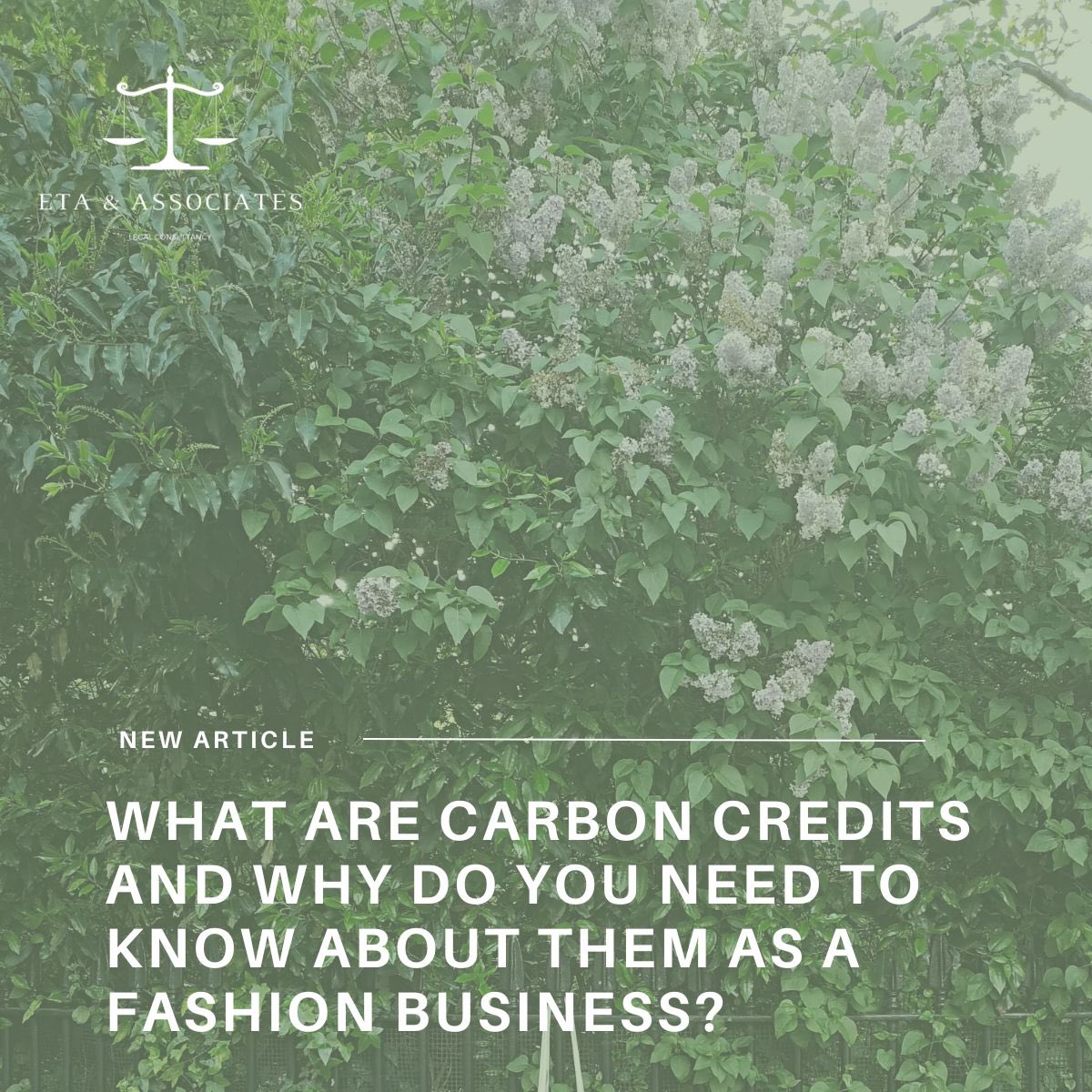Summary
- Thanks to its energy-intensive manufacture and transport methods, the fashion industry often relies heavily on fossil fuels, making it one of the largest contributors to global carbon emissions.
- In 2018, for instance, the UN disclosed that the fashion industry, including the production of clothes that people wear, contributes to about 10% of global greenhouse gas emissions. For context, this is more than the aviation and shipping industry combined.
- Currently, the fashion industry contributes between 2% to 8% of global carbon emissions.
- To combat this as part of a response to the worsening climate crisis, negotiators at the Glasgow COP26 climate change summit in November 2021 agreed to create a global carbon credit offset trading market.
- Similarly, there is the Green Fashion Week which aims to raise public awareness on sustainability. At the time of writing, the 12th edition is due to take place in September 2024.
- As consumer awareness of climate issues increases, the regulatory pressure on businesses to find innovative solutions to reduce their carbon footprint is also growing, increasing the need for businesses — and investors — to understand carbon credits.
What are Carbon Credits?
Carbon credits, also known as carbon allowances, are permits which allow the holder to emit a certain amount of greenhouse gases, measured in metric tonnes. Usually issued by national or international governmental organisations, each credit grants a business permission to generate one tonne of CO2 emissions. The number of credits issued each year is directly linked to global emissions targets. Credits frequently use “cap-and-trade” programmes, under which regulators set limits (or ‘caps’) on carbon emissions, and then gradually decrease the cap. This process incentivises companies to reduce their emissions quantifiably. By assigning a monetary value to carbon emissions, credits shift some of the impact of a company’s emissions to be felt internally. They also turn CO2 emissions into a commodity, thereby creating a self-sustaining market for credits. In these markets, carbon credits and their counterparts, carbon offsets, can be bought and sold respectively.
Organisations that reduce the amount of carbon already in the atmosphere generate carbon offsets, which act as ‘negative’ credits, selling these on to generate income which can be invested into making their operations more environmentally friendly. Other businesses can then purchase these carbon offsets to stay within their allotted emissions cap. An example of one such business is car manufacturer Tesla, who maintained profitability by selling hundreds of millions in carbon offsets to legacy carmakers, arguably proving the effectiveness of carbon markets. Carbon credits should lead to measurable emission reductions from climate action projects while being the means through which governments and private enterprises can collaboratively address the climate crisis. Similarly, Fashion brands like Gucci, Saint Laurent and Balenciaga conduct carbon offsetting by purchasing reductions in or the removal of carbon dioxide from the atmosphere from third parties as a means of compensating for emissions they generate.
Between 2012 to 2017 for instance, Marks and Spencer purchased 2 million tonnes of carbon offsets for an undisclosed sum as part of its ‘Plan A’ sustainability plan.
Types of Carbon Markets
When selling carbon credits within the carbon marketplace, there are two primary markets to choose from.
Regulated Markets
The ‘Regulated markets’ are those markets operating with the oversight of a government-established regulatory body to set the prices of credits while ensuring compliance with annual limits, with ‘cap-and-trade regulations’ being one such example. Generally, businesses which generate a surplus of carbon credits by producing beneath their emissions quota can generate income by selling these deficits on to other companies at risk of going above their allowance.
The main regulated carbon markets in the UK are:
- The Emissions Trading Scheme (ETS), which is compulsory for the aviation and energy sectors; and
- The Woodland Carbon Code and Peatland Code, both government-backed projects respectively, with publicly available details held by the UK Land Carbon Registry.
Voluntary Markets
The ‘Voluntary Markets’ are those optional markets consisting of businesses and individuals buying credits to offset their carbon emissions, which is often necessary for companies with older, inefficient or carbon-intensive operations. In recent years, the popularity of mandatory emissions trading programmes coupled with increasing pressure from climate conscious consumers has steered more companies towards the voluntary market for carbon offsets.
Net Zero pledges in particular have come to be expected by consumers due to their prevalence. Across industries and regions, the burden of expectation has driven businesses to commit to Net Zero carbon emissions — that is, balance the impact of their emissions with carbon offsets bought in the voluntary markets, or otherwise supporting projects which remove carbon from the atmosphere. To achieve this, a business might launch initiatives or support projects which lead to the absorption of CO2.
The Fashion Industry Perspective
Responsible for over 2.1 billion metric tonnes of greenhouse gas emissions each year, the fashion industry is a major contributor to global carbon emissions, making it a target for both scrutiny and investment. Apparel consumption has nearly doubled since 2009, with the industry’s emissions, resource consumption and pollution growing in tandem. This is largely due to reliance on fossil fuels and harmful chemicals in the manufacture and transport stages — the textile industry alone is said to produce 25% of global chemical output. As a result, the European Union has begun to restrict the use of some of these polluting substances in fashion production in its region.
In addition, the complexity of modern supply chains has started to shift attention towards the regions which most produce, rather than sell, garments and the materials used in their production. In the fashion industry, 40% of emissions are derived from polyester manufacturing alone. Most of this manufacturing takes place in China, closely followed by Taiwan, Korea, India, Japan, and Indonesia. A business setting carbon targets based on its own emissions may neglect to consider the overall impact of carbon produced along its supply chain.
Notably, emissions from suppliers and other third parties (known as ‘Scope 3’ emissions) are responsible for up to 99% of fashion producers’ full carbon footprint, compared to 1% from their own operations. As emissions from third parties are more often included in carbon emissions calculations and targets, fashion brands must remain aware. Pursuant to the Science Based Target Initiative (SBTi), recent EU rules obligate producers to scrutinise the regulation of their supply chains in an attempt to make brands more accountable for how their products are produced.
This focus on supply chains makes emissions an important topic for even smaller fashion brands, who may feel the impact of regulations which affect their suppliers.
In Favour of Carbon Credits
Consumers are becoming more conscious of the importance of carbon emissions and are increasingly critical of companies that neglect climate change. By supporting carbon offset projects, companies can demonstrate to consumers and investors their genuine commitment to combating climate change.
According to Edwin Reynolds of Eroceht Group, who kindly shared his thoughts with us:
“Carbon offset projects involve multiple pillars. One of the most important pillars to such projects concerns the co-benefits of the project, and the positive impact it can make to the community.“
Not all offsets are created equal: the reputation of the organisation issuing the credit determines the value of the offset. Voluntary offsets are also reliant on a clear link between the activity undertaken and the positive environmental impact, and assessing this isn’t always a straightforward process. Carbon capture projects, green tourism or technology innovations all have the potential to be viable carbon offset projects, but this won’t always be the case. In a complex market where investing in the wrong project can mean failing to meet carbon commitments, it is important to do your due diligence – or seek someone out to do it for you.
High quality offsets are ones which represent measurable amounts of reductions in CO2 emissions – although a business may not make any changes to their emissions, the impact of their emissions may be reduced.
Theory vs Practice: The Implementation & Implications of Carbon Credits in the Fashion Industry
Despite being innovative and creating stronger incentives for businesses to invest more into reducing emissions, the system is not yet a perfect one.
Some companies are years away from substantially reducing their emissions due to technological and financial constraints. There is a risk that companies may rely too heavily on purchasing offsets rather than making genuine reductions in their own emissions. The increasing burden may push them towards quick fixes which yield immediate results, such as buying offsets and reducing the available funds to implement long term projects.
There is a degree of uncertainty in the markets due to the financial burden and lengthy payback periods which may deter many factories from embracing electrification and renewable energy solutions, hindering progress towards decarbonisation goals. The market for carbon credits can also be volatile, and the pricing of credits may fluctuate, impacting the financial stability of companies relying on this market.
Improving the outcomes of Carbon Credits
Fabric Production and Garment Assembly
Fabric production is another significant contributor to carbon emissions, often encompassing energy-intensive processes. Brands might look to reduce this by opting for suppliers who are already utilising renewable energy in their operations.
During the garment assembly phase, brands should work to identify overlaps between suppliers to ascertain the potential for impactful joint actions. Encouraging suppliers to adopt renewable energy solutions at scale should be another focus. This phase also demands close monitoring of Scope 1 (Direct emissions generated by companies through their own activity) and Scope 2 (Indirect emissions associated with energy purchased and used by companies in their own operations) emissions. For instance, managing natural gas or other fuels used in heating, generators, and boilers, and addressing refrigerant leakage can substantially reduce direct emissions.
The Next Step for Brands
Brands may face many challenges businesses face in their journey to reduce Scope 3 emissions – data gathering and tracking can be time intensive, as can influencing third parties in their supply chains, but this should not deter them from addressing third party emissions.
Beyond discussions with suppliers, brands can use their supplier relationships to work towards reduced emissions in various ways. The initial stages of raw material production and processing are crucial for reducing carbon emissions. Carbon conscious brands should commit to understanding their impact by quantifying emissions, including Scope 3 emissions, and publicly disclosing progress.
Brands should also focus on developing a clear business case for sustainability, highlighting the long-term benefits and responding to growing consumer demand for environmentally responsible practices.
Conclusion
Amongst the various motivators for brands to put robust climate policies in place, the process of contributing to carbon offset projects signals to consumers and investors that brands are taking climate change seriously, enhancing their reputation for corporate social responsibility (CSR), which will become increasingly more important as more regulations and restrictions are placed on the processes which underpin the fashion industry as it operates today.
By proactively targeting these key areas in the manufacturing process, fashion companies can make significant strides in reducing their carbon emissions. While the transition to renewables and other sustainable practices may require substantial investment and effort, the long-term benefits for both the environment and the business make it a crucial endeavour.
~ Oyin Olatuyi, Eku Williams, Aji Ayorinde, with guest contributions from Edwin Reynolds
Sources
https://www.investopedia.com/terms/c/carbon_credit.asp
https://unfccc.int/sites/default/files/resource/20_REP_UN%20FIC%20Playbook_V7.pdf
https://www.carbontrust.com/news-and-insights/news/scope-3-emissions-reductions-and-carbon-cr edits
https://www.projectcece.com/blog/545/what-is-carbon-neutral-fashion/
https://carboncredits.com/the-ultimate-guide-to-understanding-carbon-credits/
https://ahdb.org.uk/news/understanding-regulated-carbon-markets

